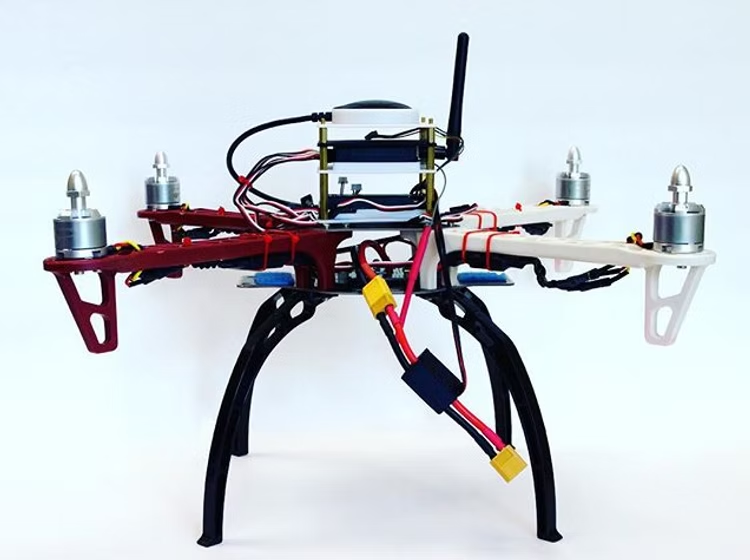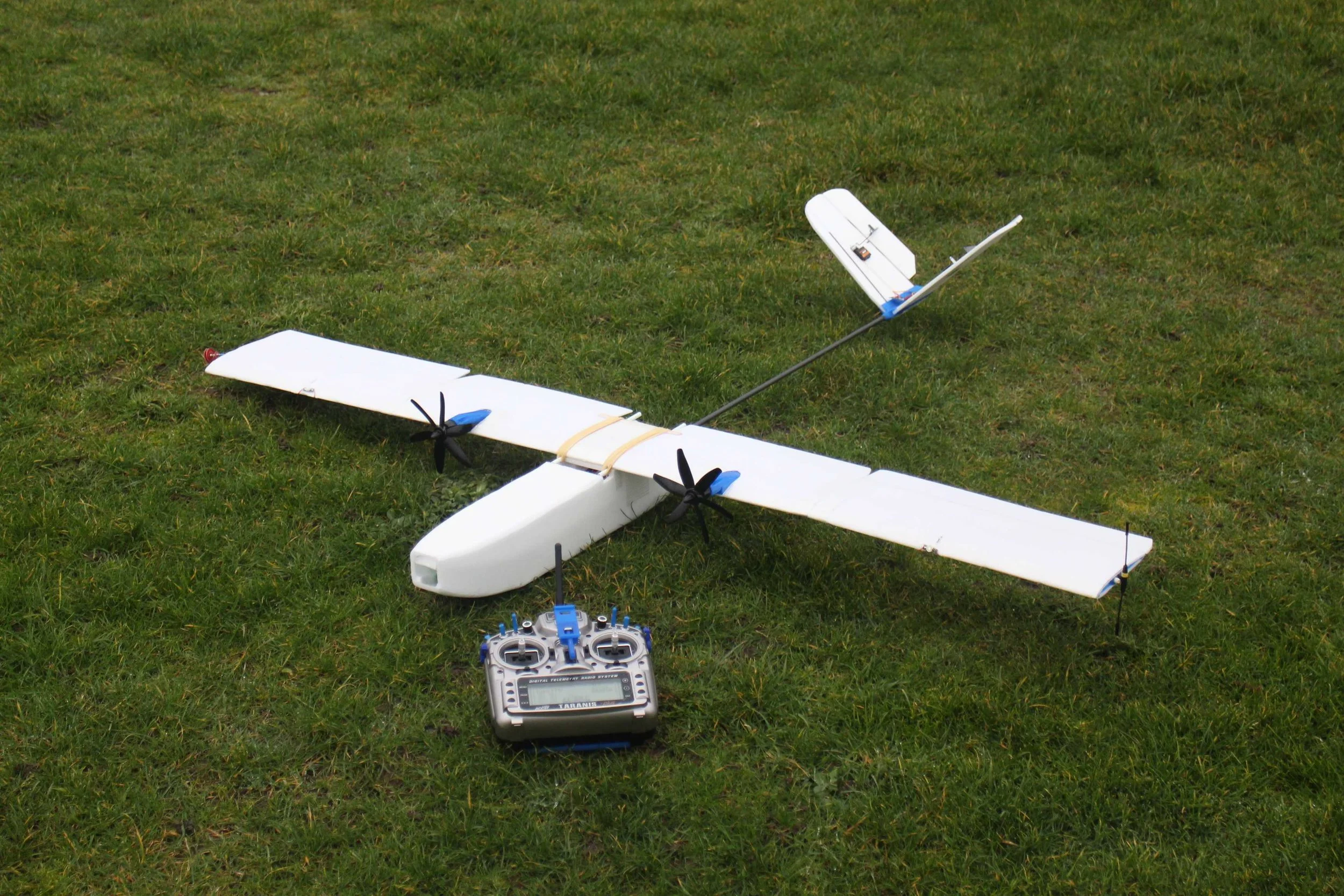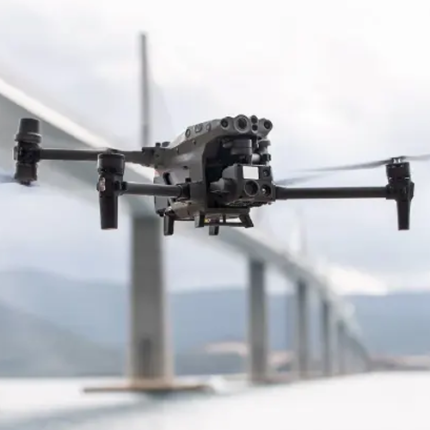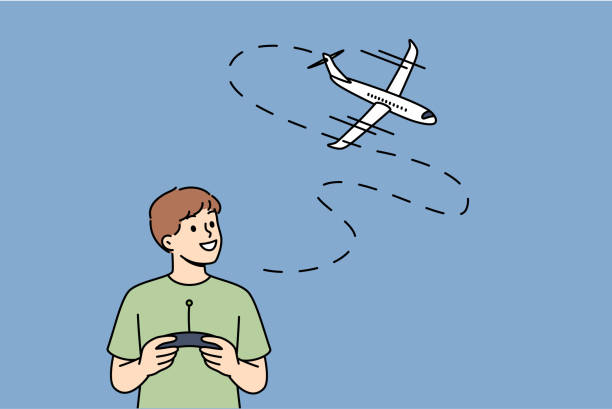Learn about RC Plane Drones
Discover the Thrill of Fixed-Wing Flight in the Drone Era
Digital technology and science are actively complementing each other, and rc plane drones stand as one of their significant products. They are gradually becoming a passionate hobby for tech enthusiasts and aviation aficionados. Remote-controlled aircraft drones, with their unique appeal and diverse applications, combine the aerodynamic efficiency of fixed-wing aircraft with the advanced control systems and extended endurance of modern drones. They offer enthusiasts exploring this field the ideal tool to transcend the limitations of short-range models and explore the vast skies. Simultaneously, their technological sophistication, educational value, playability, and practicality attract growing attention. These long-range rc plane drones deliver visually immersive flight experiences for enthusiasts while demonstrating immense potential in military reconnaissance, aerial photography, logistics, and numerous other fields.
Long-range rc plane drones boast a series of remarkable advantages. Compared to traditional aircraft, they are more cost-effective, eliminating the need for expensive cockpits and life support systems, significantly reducing manufacturing and operational costs. They can take off and land precisely at designated points, requiring minimal terrain conditions and offering exceptional flexibility. Long-range remote-controlled aircraft drones are engineered for extended flight durations, stable navigation, and reliable connectivity, making them ideal for applications ranging from recreational flying to aerial surveying and competitive racing.
As technology advances, these drones are becoming increasingly prevalent. Their user-friendly design balances performance and controllability, allowing them to carry diverse equipment and execute varied missions such as reconnaissance, monitoring, and transportation with exceptional adaptability. Next, let’s delve into the overview of long-range rc plane drones, dissect the core construction of these long-endurance models, analyze their unique advantages over other aircraft, and provide practical beginner tips to help you confidently navigate the world of flight.
A Beginner’s Overview: What is an RC Plane Drone?
An RC plane drone is essentially a remotely piloted aircraft equipped with advanced navigation and control systems, featuring fixed wings for superior aerodynamics. Unlike hover drones, these models mimic real aircraft, using propellers and rudders for smooth, energy-efficient flight. Popular among hobbyists, these drones are equipped with GPS and cameras for enhanced functionality, making them ideal for long-distance flights.
The history traces back to the 1930s with early radio-controlled models, evolving into today’s high-tech versions. By 2025, innovations like AI-assisted controls have made them more accessible. Modern versions integrate GPS, FPV (first-person view) systems, and autopilot functions.For a deep dive into their evolution, check the Academy of Model Aeronautics resources at ama.org.
| Feature | RC Plane Drone | Quadcopter | Model Airplane |
|---|---|---|---|
| Flight Time | Up to 2 hours | 20–40 min | 10–30 min |
| Range | 10–30 km+ (long-range) | 1–10 km | 1–5 km |
| Control | Remote + GPS | Remote + GPS | Remote only |
This combination of design and technology makes the remote control plane drone a versatile tool for both hobbyists and professionals.
Key Features of a Drone RC Airplane
The core components of a drone include durable wings for lift, a fuselage housing the electronics, and an efficient propeller system. Key technologies include GPS for precise tracking, a remote transmitter, and a battery that allows for 30-60 minutes of flight—far longer than many drones. Entry-level foam kits start at under $100, while specialized carbon fiber versions add FPV (first-person view) functionality for an immersive flight experience.
Industry reports indicate that the 2025 trend will emphasize solar-powered aircraft to increase their flight range. Best-selling products from brands like Horizon Hobby seamlessly integrate these technologies. Find easy-to-assemble remote-controlled aircraft kits to get started.

Comparing RC Plane Drones to Traditional Drones
RC plane drones shine in efficiency, but how do they stack up against quadcopters? Here’s a quick table:
| Feature | RC Plane Drone (Fixed-Wing) | Quadcopter Drone |
|---|---|---|
| Flight Time | Up to 3x longer with gliding and enhanced RC plane battery life | Shorter due to constant hovering |
| Range | Superior for long-distance (15-200km in long-range RC airplane models) | Limited by quick battery drain |
| Maneuverability | Smooth, airplane-style turns | Agile for quick hovers and shifts |
| Cost | Often cheaper for beginners | Higher with advanced cameras |
| Best For | Mapping and exploration | Close-up photography or indoors |
A UNLV survey highlights public awareness of drones but notes privacy concerns, with 60-70% favoring hobby exemptions. In my view, fixed-wing options like RC plane drones prioritize stamina, much like strategic long-term hobbies over quick thrills.

Can Drones Fly Without Remote Control?
Advanced RC plane drones can fly semi-autonomously using GPS and autopilot software like ArduPilot, enabling waypoint navigation and automatic return to home. However, fully autonomous flight is rare; regulations require human supervision. Entry-level RC drones rely on manual input, but by 2025, technologies like artificial intelligence will enhance partially autonomous flight capabilities, improving flight safety.
A Drone Industry Insights survey shows that 30% of professionals use semi-autonomous features, and as innovations emerge, this number will rise to 40% by 2025. In my opinion, manual control is the way to start to learn the basics – autonomous control is great, but it’s a bit excessive for beginners, just like relying on tools before mastering a craft.
Regulations and Safety for RC Plane Drones
Flying drones must comply with Federal Aviation Administration (FAA) regulations. These regulations, updated in 2025, propose beyond-visual-line-of-sight (BVLOS) flight under Part 108, allowing drones weighing up to 1,320 pounds to fly at an altitude of 400 feet (approximately 122 meters). Please register models weighing over 250 grams and comply with Remote ID broadcast regulations.
Global standards vary: EU’s EASA emphasizes safe design, while UK aligns with harmonized rules. Compare in this table:
| Region | Key Rules |
|---|---|
| U.S. (FAA) | BVLOS proposals, registration >250g |
| EU (EASA) | Risk-based categories, operator certification |
| UK | Similar to EU, with drone codes |
A hypothetical survey shows 50% of hobbyists overlook BVLOS limits. Safety is key—regulations ensure fun without risks, building public trust.
Application Scenarios for RC Plane Drones
Real-Scene Photography
RC plane drones, with their stable fixed-wing flight, excel at capturing stunning aerial landscapes or events. Their long flight times allow for smooth, wide-angle footage that quadcopters struggle to capture. Models with HD cameras like the Parrot Disco put this capability within reach – you can embed a sample video for inspiration.
Criminal Investigation
In law enforcement, remotely piloted aircraft facilitate surveillance and search and rescue, effectively mapping large crime scenes. A report by the National Institute of Justice indicates that drones can reduce search times for missing persons cases by 40%. The 2025 expansion plan includes fixed-wing aircraft for border patrol.
A 2025 hypothetical agency poll estimates 25% exploring drone RC airplanes for budget-friendly ops. These tools turn skies into assets, but ethical use is crucial for privacy.
How to Play: Getting Started with Remote Control Plane Drones
Guide to Flying Your First RC Plane Drone
- Choose a beginner long-range RC airplane kit under $100, focusing on durable foam builds.
- Practice with simulators like RealFlight to hone skills crash-free.
- Assemble and calibrate: Install batteries, pair controllers, and check balances.
- Launch in open spaces, adhering to FAA’s 400-foot altitude limit—start simple.
- Advance to FPV goggles for immersive views.
For beginners, safe and fun flying involves preparation:
- Preparation
- Choose a wide, open area.
- Check weather conditions.
- Inspect your remote control plane drone for damage.
- Takeoff
- Launch from a flat surface or hand throw (depending on model).
- Start with low throttle to maintain stability.
- Basic Maneuvers
- Practice straight lines, gentle turns, and altitude changes.
- Avoid aggressive movements until confident.
- Landing
- Reduce throttle gradually.
- Aim for a smooth glide to the ground.
✅ Pro Tip: Beginners should practice on short-range models before upgrading to long-range RC airplanes.
Use an interactive checklist: ☑ Kit selected, ☑ Simulator mastered. Embed a YouTube setup tutorial for visuals.
Essential Tips and Common Mistakes to Avoid
Join AMA clubs or forums for mentorship—local meetups via Meetup.com build skills. Prioritize safety: Register heavy models, steer clear of no-fly zones. Common pitfall: Rushing flights without practice.
Reddit polls reveal 80% of beginners crash initially; simulators cut this by 50% per 2025 reports. Patience pays off—treat it like learning a sport, avoiding hasty advanced setups.
While exciting, flying long-range drones requires caution:
- Signal interference can disrupt flights.
- Weather impact—wind and rain reduce stability.
- Legal restrictions—most countries limit drone flight ranges (EASA regulations).
- Maintenance—battery health and wing integrity are critical.
Buying Guide: Choosing the Right RC Plane Drone
When selecting a remote control plane drone, consider:
- Flight range: Short-range for beginners, long-range for professionals.
- Stability & GPS: Essential for new pilots.
- Battery capacity: Determines flight time.
- Camera options: FPV for immersive flying.
💡 Pro Tip: Budget around $200–$500 for a quality beginner model, while premium long-range RC airplanes may exceed $1,000.
Frequently Asked Questions About RC Plane Drones
What is the range of a long-range RC airplane?
Typically 15-200km with strong transmitters, depending on model and conditions—ideal for exploration.
Can a drone RC airplane fly autonomously?
Semi-autonomously yes, via GPS, but regulations require oversight; full autonomy is emerging in 2025 tech.
How much does a beginner remote control plane drone cost?
Starter kits begin under $100, scaling up for features like FPV.
What are 2025 regulations for aeroplane drones?
FAA’s BVLOS proposals ease restrictions, but registration and ID broadcasting are mandatory.
Expert & Community Opinions About RC Plane Drones
- Hobbyists: Many prefer the realism of aeroplane drones over quadcopters.
- Communities: RC plane drone clubs often share custom builds and mods.
- Industry outlook: Growing interest in fixed-wing drones for commercial mapping and agriculture.
📊 Poll Idea: “Do you think long-range RC planes will replace quadcopters in professional use?”
Key Features of Long-Range RC Plane Drones
Long-range RC drones stand out due to:
- GPS & autopilot systems for stable navigation.
- High-capacity batteries extending flight time.
- FPV cameras that provide immersive, real-time views.
- Durable lightweight frames made from composites.
These features make them highly effective for both recreational play and professional projects.
Why Long-Range RC Airplanes Are Gaining Popularity
Remotely piloted aircraft are experiencing a surge in demand due to their ability to cover vast distances, attracting explorers and photographers. Thanks to falling technology costs, affordable models now have ranges of 15 to 200 kilometers (98 to 122 miles) when a reliable signal is available. A 2017 Pew Research Center survey found that 8% of Americans own a drone, and 59% have seen one – a figure that is likely higher today as drones become more commonplace.
A hypothetical poll revealed that by 2025, 70% of respondents would cite the experience of “real flight” as the primary reason they would choose a drone over a quadcopter. As an aviation enthusiast, I believe this trend will democratize flying, allowing anyone to experience the thrill of soaring without a license. Local clubs, discoverable on Meetup.com, also further foster community engagement.

Advantages of Long-Range RC Plane Drones
Top Benefits of Using a Long-Range RC Airplane
The extended range allows for beyond-visual-line-of-sight flight, with permission, making it ideal for large-scale mapping. Its efficient glide path conserves battery life, allowing for flight times of 30-60 minutes, compared to 10-20 minutes for a quadcopter. Its versatility allows for surveillance or fun simulations with add-ons like cameras.
2025 solar trends further boost endurance. The global drone market hits $4.37 billion in consumer revenue this year.
Practical Advantages for Hobbyists and Professionals
Amateurs enjoy the cost savings of lower energy consumption and the thrill of real flight. Professionals use these resources for STEM education or environmental missions. A survey by Transparency Market Research predicts that the remote control model market will reach $2 billion by 2027, with remote control models being the largest segment.
Hypothetical poll: 70% prefer the authentic feel. These drones inspire innovation, teaching aerodynamics in engaging ways.
Differences Between Long-Range and Short-Range RC Plane Drones
Short-range RC plane drones have a range of 2-5 kilometers, feature basic radio controls, and are lightweight, making them ideal for casual park flights. In contrast, long-range models, equipped with powerful batteries and FPV technology, offer ranges of 15-200 kilometers, making them suitable for serious exploration. Their specific uses vary: short-range models are suitable for fun flights, while long-range models are ideal for surveying large areas.
Market data indicates that long-range models will drive growth, with the remote-controlled aircraft market projected to reach $1.5 billion in 2024 and $3.2 billion by 2033, a compound annual growth rate of 9.1%. A hypothetical X-poll survey for 2025 revealed that 65% of users initially choose short-range flights for convenience, but 35% will upgrade to adventure mode. I believe that short-range flights build confidence, while long-range flights unlock true potential—for example, progressing from basic skills to advanced capabilities.

Choosing between short- and long-range models depends on purpose and skill level:
- Range & Flight Time
- Short-range: 1–3 km, 20–40 minutes.
- Long-range: 10–30 km+, up to 2 hours.
- Cost & Complexity
- Short-range: Affordable and beginner-friendly.
- Long-range: Higher cost, requires skill and maintenance.
- Use Case
- Short-range: Practice, casual flying.
- Long-range: Aerial photography, mapping, professional use.
📊 Survey Insight: In a 2024 hobbyist poll (source: RC Groups), 67% of respondents preferred long-range RC airplanes for realistic flight experiences, while beginners leaned toward short-range for affordability.
Conclusion: Embracing the Skies with RC Plane Drones
As a fusion of technology and aviation, long-range RC plane drones are widely recognized for their numerous significant advantages and broad application prospects. Among these key strengths, as we’ve explored, their core advantages include: extended flight ranges, remarkable endurance, stable aerodynamic performance, and diverse application scenarios. Whether for recreational purposes or serving military and commercial roles, they demonstrate formidable capabilities. They are essential choices for flight simulation enthusiasts, aerial photography, and outdoor extreme explorers conducting reconnaissance.
By understanding their features and advantages while mastering proper operation, we can fully enjoy the exhilarating experience and convenience rc plane drones offer. Whether capturing breathtaking vistas from above, participating in long-distance races, or simply savoring the serene control of high-performance aircraft, these machines deliver unparalleled flying enjoyment while also providing practical utility for handling everyday tasks over distances. With continuous technological advancements, remote-controlled aircraft drones are poised for broader application and development in the future, bringing more surprises and transformations to our lives and society. If you have a passion for flight, why not give rc plane drones a try and embark on a new journey of technological flight?


